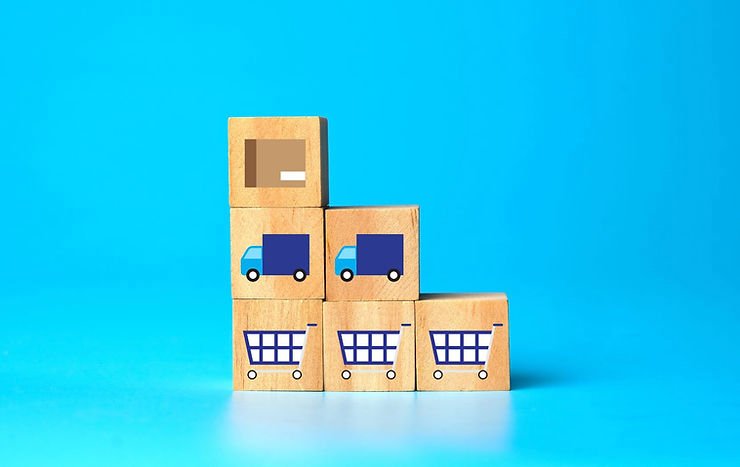Here are 7 best steps to build a successful e-commerce referral program:
1. Setting Clear Goals
A referral program can be an effective way to increase sales and grow your customer base. However, before you start creating a referral program, it’s essential to define your goals and objectives. Setting clear goals will help you design a program that is aligned with your business objectives and is more likely to be successful.
Define the Objectives of Your Referral Program
The first step in setting clear goals for your e-commerce referral program is to define the program’s objectives. What do you want to achieve with your program? Do you want to increase sales, grow your customer base, or both? Defining your objectives will help you create a program that is tailored to your specific needs and goals.
For example, if your goal is to increase sales, you may want to offer an incentive that encourages customers to make a purchase. On the other hand, if your goal is to grow your customer base, you may want to offer an incentive that encourages customers to refer their friends and family.
Align Your Goals with Your Business Objectives
Once you have defined the objectives of your referral program, it’s essential to align your goals with your overall business objectives. Your referral program should support and complement your business objectives, rather than working against them. For example, if your business objective is to increase customer loyalty, your referral program should focus on rewarding loyal customers who refer their friends and family. On the other hand, if your business objective is to increase sales, your referral program should focus on incentivizing customers to make a purchase.
Use the SMART Goal Framework
To set clear and effective goals for your referral program, it’s important to use the SMART goal framework. SMART stands for Specific, Measurable, Achievable, Relevant, and Time-bound. Let’s break down each of these elements:
Specific
Your goals should be clear and specific, leaving no room for ambiguity or misinterpretation. For example, instead of setting a goal to “increase sales,” you could set a goal to “increase sales by 10% in the next six months through our referral program.”
Measurable
Your goals should be measurable so that you can track your progress and determine if you have achieved your objectives. For example, if your goal is to increase sales, you should track the number of sales generated through your referral program.
Achievable
Your goals should be challenging yet achievable. Setting unrealistic goals can lead to frustration and demotivation. For example, if you have never implemented a referral program before, setting a goal to generate 1000 referrals in the first month may be unrealistic.
Relevant
Your goals should be relevant to your business objectives and align with your overall business strategy. For example, if your business objective is to increase customer retention, your referral program’s goal should focus on rewarding loyal customers who refer their friends and family.
Time-bound
Your goals should have a deadline or timeframe to create a sense of urgency and accountability. For example, you could set a goal to generate 50 referrals in the next month. By using the SMART goal framework, you can set clear and effective goals for your e-commerce referral program. You can also measure your progress and determine if you have achieved your objectives. Setting clear goals is an essential step in building a successful e-commerce referral program. By defining the objectives of your program, aligning your goals with your business objectives, and using the SMART goal framework, you can create a program that is tailored to your specific needs and goals. Remember to measure your progress and optimize your program based on your results. It’s important to communicate those goals with your team and stakeholders. By sharing your goals with your team, they can work together towards achieving those objectives. This will also help to ensure that everyone is on the same page and understands what needs to be done to achieve success.

Another benefit of setting clear goals is that it can help you stay motivated and focused on what’s important. By having a clear direction and purpose, you can prioritize your efforts and resources toward achieving your goals. Make sure to communicate your goals with your team and stakeholders and measure your progress to ensure that you are on track to achieving success. With a successful referral program in place, you can increase sales, grow your customer base, and strengthen customer loyalty.
2. Defining Your Incentive Structure
Offering an incentive is a critical element of any successful e-commerce referral program. A well-designed incentive structure can motivate your customers to refer their friends and family and can help increase sales and grow your customer base.
Offer an Attractive Incentive to Your Customers
The first step in defining your incentive structure is to offer an attractive incentive to your customers. The incentive should be valuable enough to motivate your customers to participate in the referral program. Examples of incentives include discounts, free products, or loyalty points that can be redeemed for future purchases. When selecting an incentive, it’s essential to consider the value of the incentive compared to the cost of acquiring a new customer. For example, if your average customer spends $50 on your website, offering a 10% discount on their next purchase may not be enough to motivate them to refer their friends and family.
Consider Offering Tiered Incentives
Another way to incentivize your customers is by offering tiered incentives. Tiered incentives are rewards that increase in value as the customer refers more friends and family to your website. For example, you could offer a 10% discount for the first referral, a 15% discount for the second referral, and a 20% discount for the third referral. Tiered incentives can help motivate your customers to refer more people to your website and can help increase the lifetime value of your customers. By rewarding your most loyal customers, you can also encourage them to continue referring their friends and family, creating a cycle of repeat business and referrals.
Use a Limited-Time Offer to Create a Sense of Urgency
Creating a sense of urgency is a powerful way to motivate your customers to refer their friends and family. By using a limited-time offer, you can encourage your customers to act quickly and refer to their network before the incentive expires. For example, you could offer a discount that is only available for a limited time, such as a 24-hour flash sale. This can create a sense of urgency and encourage your customers to act quickly to take advantage of the offer.
Choose an Incentive That Aligns with Your Business and Appeals to Your Customers
When selecting an incentive, it’s important to choose an incentive that aligns with your business objectives and appeals to your customers. The incentive should be relevant to your product or service and should appeal to your target audience. For example, if you sell sports equipment, offering a discount on sports gear or a free sports bag with a purchase may be an attractive incentive for your customers. When you sell beauty products, offering a free sample or a discount on a specific product may be a more relevant incentive for your customers. Defining your incentive structure is a critical step in building a successful e-commerce referral program. By offering an attractive incentive, considering tiered incentives, using a limited-time offer, and choosing an incentive that aligns with your business and appeals to your customers, you can create a program that motivates your customers to refer their friends and family.
Remember to measure the success of your incentive structure and adjust it as needed based on your results. With a well-designed incentive structure in place, you can increase sales, grow your customer base, and create a cycle of repeat business and referrals. In addition to offering an attractive incentive, it’s also important to make sure that the incentive is easy for customers to redeem. The redemption process should be simple and intuitive so that customers are not discouraged from participating in the referral program. One way to make the redemption process easier is to use an automated referral program platform.
You shall also provide clear instructions on how to participate and how to redeem the incentive. You can do this by including a call-to-action button on your website or in your marketing materials, providing a referral link that customers can easily share on social media, and sending follow-up emails with instructions on how to redeem the incentive
When designing your incentive structure, it’s also important to consider the cost of the incentive. You want to make sure that the cost of the incentive is not greater than the value of the customer that you are acquiring. For example, if the cost of acquiring a new customer is $50, you wouldn’t want to offer an incentive that costs $100.To keep costs under control, you may want to consider offering non-monetary incentives, such as access to exclusive content, early access to new products, or a personal shoutout on your social media channels.

These incentives can be valuable to your customers, but may not have a high monetary value. Also, consider making the redemption process easy for customers, consider the cost of the incentive, and measure the success of your program to ensure that it is achieving your business objectives. With a well-designed incentive structure in place, you can increase sales, grow your customer base, and create a loyal customer community.
3. Making It Easy for Customers to Participate
One of the most important elements of a successful e-commerce referral program is making it easy for customers to participate. If the referral process is too complicated or time-consuming, customers may be less likely to participate, reducing the effectiveness of your program.
Provide Clear Instructions on How to Participate
The first step in making it easy for customers to participate in your e-commerce referral program is to provide clear instructions on how to participate. Your customers should know exactly what they need to do to participate in the referral program, and how to share their referral link with their friends and family. You can do this by creating a dedicated landing page for your referral program that outlines the steps for participating. This landing page should include information on how to share the referral link, how the incentive works, and how to redeem the incentive.
Make it Easy for Customers to Share Their Referral Link
To encourage customers to share their referral links, it’s important to make it as easy as possible for them to do so. This can be done by providing a share button or link that customers can use to share their referral link on social media or through email. You can also provide pre-written messages that customers can use to share their referral links. These messages should be personalized and tailored to each customer, making it easy for them to share their referral link with their network.
Use a Simple and Intuitive Referral Process
The referral process should be simple and intuitive so that customers are not discouraged from participating in the program. A complicated or confusing referral process can be a barrier to participation, reducing the effectiveness of your program. One way to make the referral process simpler is to use a dedicated referral platform or software. These platforms can automate the referral process, track referrals, and distribute incentives to customers. By using an automated platform, you can make the referral process as simple and seamless as possible, and reduce the workload for your team. Another way to simplify the referral process is to use a one-click referral process. This allows customers to refer to their friends and family with just one click, without having to fill out a long form or provide additional information.
Make the Redemption Process Simple and Intuitive
To encourage customers to participate in the referral program, it’s important to make the redemption process simple and intuitive. The redemption process should be easy to understand and should require minimal effort on the part of the customer. You can do this by providing clear instructions on how to redeem the incentive, and by making the redemption process as simple as possible. For example, you could include a unique coupon code that customers can use at checkout to redeem their incentive. This code should be easy to enter and should be automatically applied to the customer’s order. Another way to make the redemption process simple is to use an automated redemption process. This allows customers to redeem their incentive automatically, without having to go through a long or complicated process.
Use A/B Testing to Optimize the Referral Process
Once you have implemented your referral program, it’s important to continuously optimize the referral process to improve its effectiveness. A/B testing is a powerful tool that can help you optimize your program by testing different elements of the referral process. For example, you could test different referral incentives, different referral messaging, or different referral landing pages to see which performs best. By using A/B testing, you can identify the most effective elements and refine your program to improve its effectiveness. Making it easy for customers to participate in your e-commerce referral program is crucial to its success By providing clear instructions on how to participate, making it easy for customers to share their referral link, using a simple and intuitive referral process, and making the redemption process simple and intuitive, you can encourage more customers to participate in the program. With a well-designed and optimized referral program in place, you can increase sales, grow your customer base, and create a loyal customer community.
To make it easy for customers to participate in your referral program, it’s important to promote your program through multiple channels. This can help you reach a wider audience and encourage more customers to participate in the program. By using a multi-channel approach, you can reach customers at different stages of the customer journey and encourage them to participate in the program. Another way to promote your referral program is to incentivize customers to share their referral links. Moreover, making it easy for customers to participate in your e-commerce referral program is crucial to its success. By providing clear instructions, making it easy to share the referral link, using a simple and intuitive referral process, and making the redemption process simple and intuitive, you can encourage more customers to participate in the program. Also, you can promote your program through multiple channels and incentivize customers to share their referral links to reach a wider audience through a well-designed and promoted referral program in place where you can increase sales, grow your customer base, and create a loyal customer community.
4. Leveraging Your Existing Customer Base

Leveraging your existing customer base is a powerful way to grow your e-commerce referral program. By identifying your most loyal customers, using personalized referral offers, providing additional incentives to your most loyal customers, making it easy to refer their friends and family, and using social proof to encourage participation, you can tap into the power of your existing customer base and reach a wider audience. Remember to continue to provide excellent customer service and build a strong brand reputation to create a community of loyal customers who are eager to refer their friends and family.
One of the most effective ways to grow your e-commerce referral program is by leveraging your existing customer base. Your existing customers are already familiar with your brand and have experience with your products or services. By incentivizing them to refer their friends and family, you can tap into their network and reach a wider audience.
Identify Your Most Loyal Customers
The first step in leveraging your existing customer base is to identify your most loyal customers. These are the customers who have a history of making repeat purchases, leaving positive reviews, and engaging with your brand on social media. By identifying your most loyal customers, you can target them with a personalized referral offer and encourage them to refer their friends and family. You can also use their loyalty to your advantage by offering them additional incentives or rewards for participating in the referral program.
Use Personalized Referral Offers
Personalized referral offers are a powerful way to incentivize your existing customers to refer their friends and family. These offers are tailored to each customer’s preferences and past purchase history, making them more likely to participate in the referral program. For example, you could offer a discount on a product that the customer has previously purchased or a product that is similar to their past purchases. This can help increase the relevance of the offer and make it more appealing to the customer. You can also use personalized referral offers to incentivize customers who have not purchased in a while. For example, you could offer a discount on their next purchase if they refer a friend who makes a purchase.
Provide Additional Incentives to Your Most Loyal Customers
Your most loyal customers are your biggest advocates and can be a powerful asset in your e-commerce referral program. To encourage them to refer their friends and family, consider offering them additional incentives or rewards. Also, you could offer a higher incentive or reward for customers who have referred a certain number of friends or who have made a certain number of successful referrals. This can help incentivize your most loyal customers to continue referring to their network and can help increase the lifetime value of your customers.
Make it Easy for Your Customers to Refer Their Friends and Family
It’s important to make it as easy as possible for your customers to refer to their friends and family. The referral process should be simple and intuitive and should require minimal effort on the part of the customer. You can do this by providing a dedicated referral page on your website, including a referral link in your marketing materials, and using an automated referral platform to track referrals and distribute incentives. By making the referral process as easy as possible, you can encourage more customers to participate in the program and reach a wider audience.
Use Social Proof to Encourage Participation
Social proof is a powerful motivator that can encourage more customers to participate in your e-commerce referral program. Social proof refers to the idea that people are more likely to take action if they see others doing the same thing. To use social proof to encourage participation in your referral program, consider highlighting the success stories of your existing customers. You can do this by featuring customer testimonials or by showcasing the number of successful referrals that each customer has made. Using social proof to incentivize customers to participate in the program can offer an additional incentive or reward to customers who reach a certain number of successful referrals, and highlight their success on your website and social media channels.
5. Promoting Your E-commerce Referral Program

Use Multiple Channels to Promote Your Referral Program
To reach a wider audience, it’s important to promote your referral program through multiple channels. This can help you reach customers at different stages of the customer journey and encourage them to participate in the program. You can promote your referral program through social media, email marketing, and paid advertising. By using a multi-channel approach, you can increase the visibility of your referral program and reach a wider audience. You can also send out email newsletters to your subscribers that include information about the referral program and how to participate.
Use Personalized Referral Links in Your Marketing Materials
Using personalized referral links in your marketing materials is a powerful way to promote your e-commerce referral program. These links are unique to each customer and can help you track the success of your referral program. You can include personalized referral links in your email newsletters, social media posts, and paid advertising campaigns. This can help encourage customers to participate in the program and can help you track the success of your promotional efforts.
Create a Dedicated Landing Page for Your Referral Program
Creating a dedicated landing page for your referral program is an effective way to promote the program and encourage participation. This landing page should include information on how the program works, how to participate, and how to redeem the incentive. You can also include customer testimonials or success stories on the landing page to provide social proof and encourage participation. By creating a dedicated landing page, you can provide a centralized location for customers to learn about the referral program and participate in the program.
Offer Additional Incentives to Customers Who Participate in the Program
Offering additional incentives to customers who participate in the referral program is a powerful way to encourage participation and increase the effectiveness of your program. For example, you could offer a higher incentive or reward for customers who refer a certain number of friends or who make a certain number of successful referrals. You can also offer additional incentives for customers who share their referral links on social media or through email. This can help encourage customers to spread the word about your program and reach a wider audience
Measure the Success of Your Referral Program
To ensure that your promotional efforts are effective, it’s important to measure the success of your referral program. This can help you identify areas for improvement and optimize your program for maximum effectiveness. You can measure the success of your program by tracking the number of referrals, the number of successful referrals, and the revenue generated from referrals. You can also use A/B testing to test different elements of the referral program, such as referral incentives or messaging, to see which performs best. By measuring the success of your program, you can refine your promotional efforts and optimize your program to achieve your business objectives. Always continuously optimize your program based on your results, and provide excellent customer service, and build a strong brand reputation to encourage customer loyalty and advocacy. With a well-designed and promoted referral program in place, you can increase sales, grow your customer base, and create a loyal customer community.
In addition to these strategies, it’s important to keep your referral program top of mind for your customers. This means promoting your program consistently over time, not just during specific promotions or events. Consider incorporating your referral program into your overall marketing strategy, and make sure that it is prominently featured on your website, in your email newsletters, and on your social media channels. This can help ensure that your customers are aware of the program and are encouraged to participate. It’s also important to communicate the benefits of the program clearly and effectively. Make sure that customers understand what’s in it for them and why they should participate. This can help increase the effectiveness of your promotional efforts and encourage more customers to participate in the program. This step will help you identify areas for improvement and optimize the program for maximum effectiveness where you will be consistently promoting and optimizing your referral program, you can create a sustainable and successful program that drives growth for your e-commerce business.

Promoting your e-commerce referral program is crucial to its success. By using multiple channels to promote the program, using personalized referral links in your marketing materials, creating a dedicated landing page, offering additional incentives to customers who participate, and measuring the success of your program, you can reach a wider audience and encourage more customers to participate. Remember to keep your program top of mind for your customers, communicate the benefits clearly and effectively, and continuously monitor and analyze the performance of your program to optimize for maximum effectiveness.
6. Monitoring the Results
Monitoring the results of your e-commerce referral program is crucial to its success. By tracking the performance of the program, you can identify areas for improvement, optimize the program for maximum effectiveness, and ensure that it is achieving your business objectives.
Set Clear Metrics for Success
Before you begin monitoring the results of your referral program, it’s important to set clear metrics for success. This will help you measure the effectiveness of the program and ensure that it is achieving your business objectives. Some common metrics for measuring the success of a referral program include the number of referrals, the number of successful referrals, the revenue generated from referrals, and the lifetime value of referred customers. By setting clear metrics for success, you can ensure that your program is aligned with your business objectives and is contributing to the growth of your e-commerce business.
Use an Automated Referral Platform to Track Results
Using an automated referral platform is a powerful way to track the results of your e-commerce referral program. These platforms can track referrals, distribute incentives, and provide detailed analytics on the performance of the program. By using an automated referral platform, you can save time and resources on manual tracking and ensure that your data is accurate and up-to-date. You can also use the analytics provided by the platform to identify areas for improvement and optimize the program for maximum effectiveness.
Analyze Your Data Regularly
Analyzing your data regularly is a crucial part of monitoring the results of your e-commerce referral program. By analyzing your data, you can identify trends and patterns in the performance of the program, and make data-driven decisions to optimize the program for maximum effectiveness. For example, you may notice that certain types of incentives or messaging are more effective at driving referrals than others. By analyzing your data, you can identify these trends and optimize your program accordingly. You can also use A/B testing to test different elements of your referral program, such as incentives or messaging, to see which performs best. By continuously analyzing your data and optimizing your program, you can ensure that it is achieving your business objectives and contributing to the growth of your e-commerce business.
Communicate Results to Your Team
Communicating the results of your e-commerce referral program to your team is an important part of monitoring the program’s success. By sharing the data and insights from the program with your team, you can ensure that everyone is aligned on the program’s objectives and is working towards its success. You can also use the results of your referral program to inform other areas of your business, such as product development or marketing strategy. For example, if you notice that a certain product is driving a high number of referrals, you may want to focus on promoting that product more heavily in your marketing materials. By communicating the results of your referral program to your team, you can ensure that everyone is working towards the same goals and that the program is integrated into your overall business strategy.
Continuously Refine Your Program Based on Results

It is important to continuously refine your e-commerce referral program based on the results of your monitoring and analysis. This means making data-driven decisions to optimize the program for maximum effectiveness and being open to trying new strategies and tactics to drive better results. Let’s say, for example, you may want to test different types of incentives or messaging to see what resonates best with your customers. Or, you may want to experiment with different referral channels, such as social media or email marketing, to see which drives the most referrals.
By continuously refining your program based on the results of your monitoring and analysis, you can create a sustainable and successful program that drives growth for your e-commerce business over the long term. Monitoring the results of your e-commerce referral program is crucial to its success. By setting clear metrics for success, using an automated referral platform to track results, analyzing your data regularly, communicating results to your team, and continuously refining your program based on results, you can ensure that your program is achieving your business objectives and contributing to the growth of your e-commerce business.
7. Personalizing Your Messaging for Your E-commerce Referral Program
Personalizing your messaging for your e-commerce referral program is crucial to its success. By tailoring your messaging to the needs and preferences of your customers, you can increase engagement, drive more referrals, and create a more positive customer experience.
Understand Your Target Audience
Before you begin personalizing your messaging for your e-commerce referral program, it’s important to understand your target audience. This includes their demographics, interests, and behaviors. By understanding your target audience, you can tailor your messaging to their specific needs and preferences. For example, if your target audience is primarily young professionals, you may want to use messaging that emphasizes the convenience and time-saving benefits of your referral program.
Use Customer Data to Personalize Your Messaging
Using customer data is a powerful way to personalize your messaging for your e-commerce referral program. By using data such as purchase history, browsing behavior, and demographic information, you can tailor your messaging to each customer’s specific needs and interests. If a customer has recently purchased a specific product from your e-commerce store, you may want to use messaging that emphasizes the benefits of referring friends to that product. This can help increase the relevance and effectiveness of your messaging and can drive more referrals from each customer.
Segment Your Audience for Personalized Messaging
Segmenting your audience is another powerful way to personalize your messaging for your e-commerce referral program. By grouping your customers into different segments based on their behavior or preferences, you can tailor your messaging to each segment’s specific needs and interests. You may want to create a segment of customers who have referred friends in the past and use messaging that emphasizes the benefits of referring even more friends. Or, you may want to create a segment of customers who have not yet referred any friends and use messaging that emphasizes the benefits of the program and how easy it is to participate.
Use Personalized Incentives to Encourage Referrals
Using personalized incentives is another powerful way to encourage referrals and personalize your messaging for your e-commerce referral program. By offering incentives that are tailored to each customer’s specific interests or preferences, you can increase the likelihood that they will refer friends to your e-commerce store. If a customer has recently purchased a product in a specific category, you may want to offer a higher incentive for referring friends to products in that same category. This can help increase the relevance and effectiveness of your incentives and can drive more referrals from each customer.
Use Personalized Messaging in Your Referral Emails

It is a powerful way to increase engagement and drive more referrals for your e-commerce referral program. By using the customer’s name, including information on their recent purchases or browsing behavior, and tailoring the messaging to their specific needs and interests, you can create a more personalized and engaging experience for each customer. For example, you may want to include a personalized greeting in your referral emails that address the customer by name. You can also use messaging that emphasizes the benefits of the program and how easy it is to participate and provide a personalized referral link that is unique to each customer.
Test and Optimize Your Messaging for Maximum Effectiveness
This means testing different messaging strategies and tactics to see what resonates best with your target audience and optimizing your messaging based on the results of your testing. You may want to test different incentives or messaging strategies to see which drives the most referrals. Or, you may want to experiment with different referral channels, such as social media or email marketing, to see which drives the most referrals. By continuously testing and optimizing your messaging, you can ensure that it is achieving your business objectives and driving the most referrals possible.
Personalizing your messaging for your e-commerce referral program is crucial to its success. By understanding your target audience, using customer data to personalize your messaging, segmenting your audience for personalized messaging, using personalized incentives to encourage referrals, using personalized messaging in your referral emails, and testing and optimizing your messaging for maximum effectiveness, you can create a more engaging and effective referral program that drives growth for your e-commerce business.

